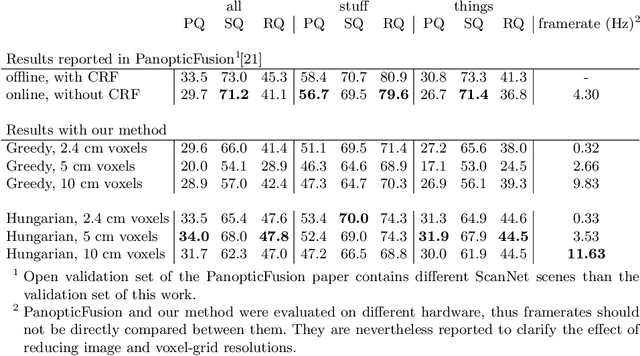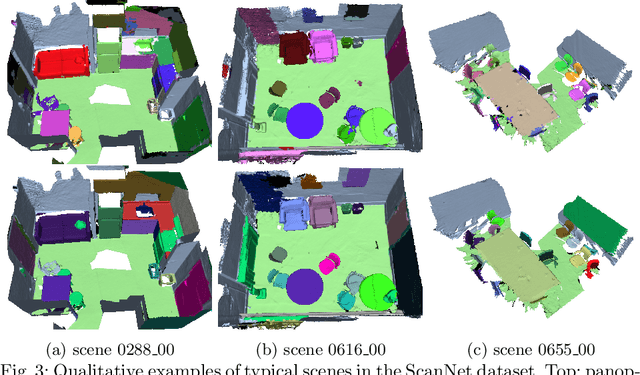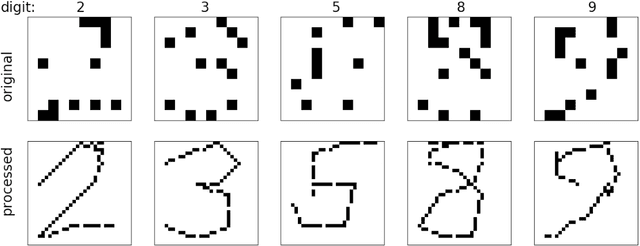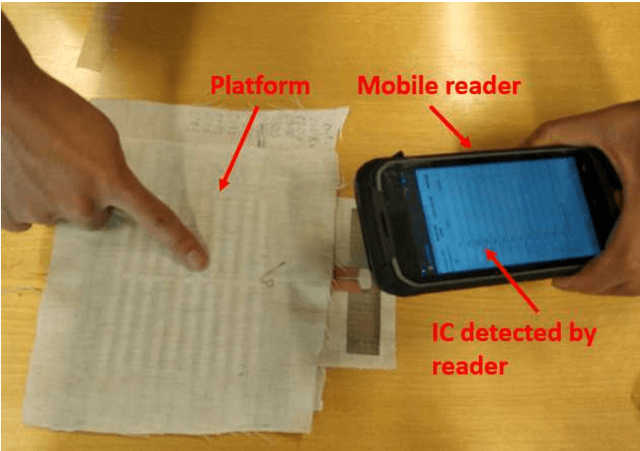Leevi Raivio
Online panoptic 3D reconstruction as a Linear Assignment Problem
Apr 01, 2022



Abstract:Real-time holistic scene understanding would allow machines to interpret their surrounding in a much more detailed manner than is currently possible. While panoptic image segmentation methods have brought image segmentation closer to this goal, this information has to be described relative to the 3D environment for the machine to be able to utilise it effectively. In this paper, we investigate methods for sequentially reconstructing static environments from panoptic image segmentations in 3D. We specifically target real-time operation: the algorithm must process data strictly online and be able to run at relatively fast frame rates. Additionally, the method should be scalable for environments large enough for practical applications. By applying a simple but powerful data-association algorithm, we outperform earlier similar works when operating purely online. Our method is also capable of reaching frame-rates high enough for real-time applications and is scalable to larger environments as well. Source code and further demonstrations are released to the public at: \url{https://tutvision.github.io/Online-Panoptic-3D/}
Handwritten Character Recognition from Wearable Passive RFID
Aug 06, 2020



Abstract:In this paper we study the recognition of handwritten characters from data captured by a novel wearable electro-textile sensor panel. The data is collected sequentially, such that we record both the stroke order and the resulting bitmap. We propose a preprocessing pipeline that fuses the sequence and bitmap representations together. The data is collected from ten subjects containing altogether 7500 characters. We also propose a convolutional neural network architecture, whose novel upsampling structure enables successful use of conventional ImageNet pretrained networks, despite the small input size of only 10x10 pixels. The proposed model reaches 72\% accuracy in experimental tests, which can be considered good accuracy for this challenging dataset. Both the data and the model are released to the public.
 Add to Chrome
Add to Chrome Add to Firefox
Add to Firefox Add to Edge
Add to Edge